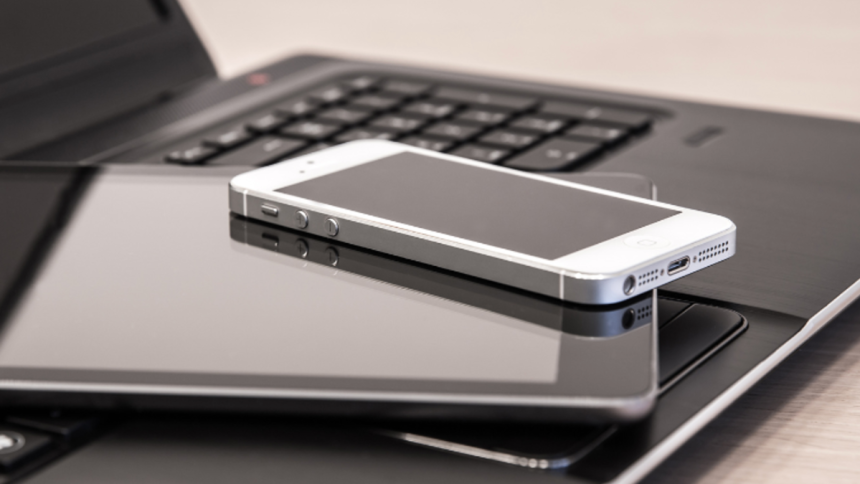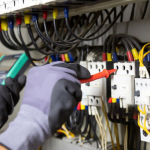It’s a modern world – smartphones are practically glued to our hands, and Wi-Fi signals surround us like invisible clouds. You may have heard the term “EMF” come up, and you might be starting to wonder: What exactly is EMF exposure, and is it something I should be concerned about?
Don’t worry – we’ll walk you through it. We’ll break down the basics of EMF exposure, how it could be impacting your health, and the best ways to protect yourself.
What Is EMF Exposure?
EMF stands for electromagnetic field, and it refers to a type of radiation that is associated with the use of electrical power and various forms of natural and man-made lighting. In simple terms, EMFs are emitted by many of the devices we use every day, such as cell phones, laptops, Wi-Fi routers, Bluetooth devices, smart TVs, and even household appliances.
There are two types of EMFs:
- Low-frequency EMFs: Emitted by things like power lines and home appliances.
High-frequency EMFs: Emitted by wireless devices and X-rays.
While EMFs are not new (the Earth itself emits a natural EMF), our exposure has drastically increased with the boom in technology. And with that has come growing concern over how constant exposure may affect our health over time.
Why Should You Care About EMF Exposure?
Although the science is still evolving, many studies suggest that prolonged exposure to high levels of EMFs could potentially affect sleep, mental clarity, hormone production, and even fertility. People who are more sensitive to EMFs may experience symptoms like:
- Fatigue
- Headaches
- Trouble sleeping
- Dizziness
- Tingling or burning sensations in the skin
For most people, these effects are subtle and easy to dismiss. But as tech becomes even more integrated into our lives, many health professionals are choosing to proactively reduce their EMF exposure, and they’re encouraging the rest of the world to do the same.
Everyday Sources of EMF in Your Home
Many people are surprised to learn just how many common devices emit EMFs. Here are some of the most common sources:
- Smartphones and tablets
- Wi-Fi routers and modems
- Bluetooth headsets and smartwatches
- Microwave ovens
- Smart TVs and gaming consoles
- Smart meters (used by utility companies)
- Laptops and desktops
If you live in a city, EMFs also come from nearby cell towers and public Wi-Fi hotspots. With so many overlapping signals and devices, it’s easy to see why concerns around cumulative exposure are growing.
EMF Protection: What Can You Do?
Protecting yourself from EMFs doesn’t mean you need to go off-grid or toss your smartphone. Small, smart adjustments to your lifestyle can make a difference. Here are some simple strategies:
1. Limit Device Use and Distance
Keep your phone or tablet away from your body when you’re not using them. Use speakerphone or wired headphones instead of holding your phone to your head, and try not to keep your laptop directly on your lap for long periods of time. Use a desk or EMF-blocking laptop pad instead.
2. Turn Off Devices When You’re Not Using Them
Wi-Fi routers, smart speakers, and other wireless devices continue to emit EMFs even when you’re not using them. Turn them off at night or use outlet timers to cut power during sleep hours.
3. Create a Low-EMF Sleep Environment
Since sleep is critical for your body’s healing and detox processes, make your bedroom a low-EMF zone. Keep your phone out of the bedroom or put it in airplane mode. Consider using a wired alarm clock and turning off your Wi-Fi router at night.
4. Use Wired Connections
We live in a wireless world, but go for wired internet connections over Wi-Fi whenever possible. Ethernet cables provide faster and more stable connectivity and also reduce exposure to RF radiation.
5. Invest in EMF Protection Products
There’s a growing market for EMF protection tools — from shields and phone cases to bed canopies and grounding mats. While they’re not all created equal, many users report benefits, especially when they use them alongside other reduction strategies.
Wearing EMF Clothing for Extra Protection
One increasingly popular method of defense against EMFs is EMF-blocking clothing. These garments are woven with conductive materials like silver or copper, which act as a barrier to block or reduce electromagnetic radiation from reaching your body.
EMF clothing options include:
- T-shirts, hoodies, and pants
- Hats and beanies (especially helpful if you live near a cell tower)
- Underwear and maternity wear (to protect reproductive organs and unborn babies)
- EMF shielding blankets for added protection while sleeping or using devices
If you’re looking for an extra layer of defense without sacrificing comfort, EMF shielding products like the HAVN WaveStopper Blanket are worth considering. Made with EMF-blocking materials, these types of products are designed to protect against wireless radiation while offering soft, breathable comfort. They’re perfect for use at home, in the office, or on the go.
Final Thoughts
As our homes, cars, and cities become smarter and more connected, EMF exposure is an unavoidable part of modern life. Many experts agree that it’s wise to minimize unnecessary exposure — especially when simple steps can make a meaningful difference.
From adjusting how you use your devices to investing in EMF-blocking clothing and accessories, there are plenty of practical ways to take control of your digital environment. Think of it as a tech-life balance: you don’t have to give up your gadgets — you just need to use them a bit more mindfully.
Lynn Martelli is an editor at Readability. She received her MFA in Creative Writing from Antioch University and has worked as an editor for over 10 years. Lynn has edited a wide variety of books, including fiction, non-fiction, memoirs, and more. In her free time, Lynn enjoys reading, writing, and spending time with her family and friends.















